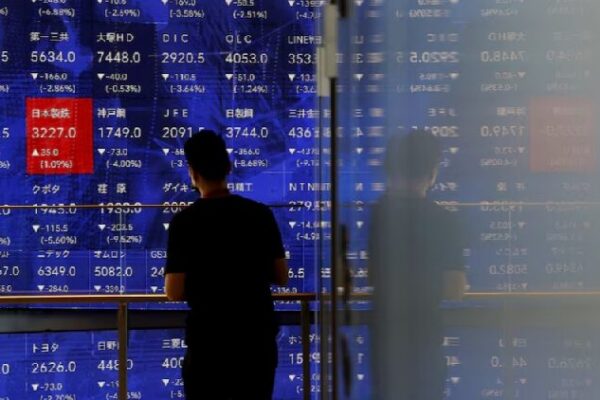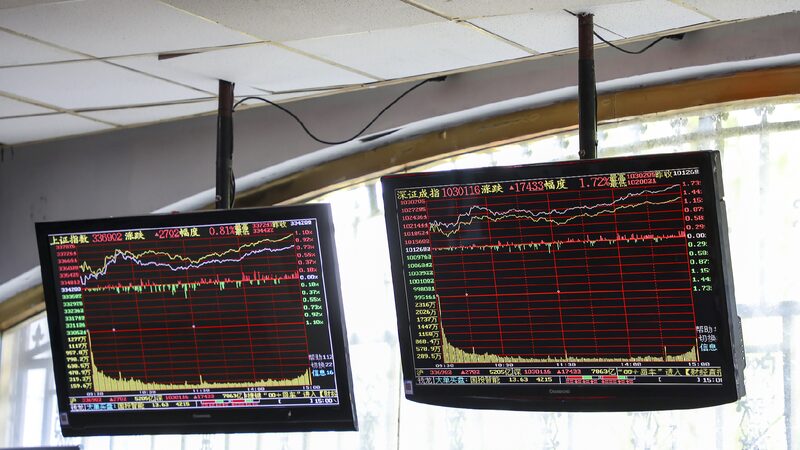Global financial markets are reeling as the impact of U.S. President Donald Trump’s new tariff policies sends shockwaves across the globe. On Monday, stock markets from Asia to Europe and North America extended their losses, reflecting growing fears of a potential global trade war.
Asian Markets Plunge
In Asia, the market reaction was swift and severe. Japan’s Nikkei 225 index nosedived nearly 9 percent shortly after opening, before closing 7.83 percent lower—the worst single-day drop since August 2023. South Korea’s KOSPI fell 5.57 percent, triggering a temporary trading halt, while Hong Kong’s Hang Seng Index tumbled 13.2 percent by the end of trading—the sharpest decline in three decades.
On the Chinese mainland, the Shanghai Composite Index dropped 7.34 percent by closing time, with over 2,900 stocks hitting the daily limit for declines. The market turmoil also affected Taiwan, where the benchmark index plummeted 9.7 percent, activating circuit breakers designed to prevent further losses.
European Markets Follow Suit
European stocks weren’t spared from the sell-off. Major indexes suffered substantial declines after the opening bell. By mid-afternoon, the pan-European Stoxx 600 had dropped 3.8 percent, with all sectors in the red. Germany’s DAX index was down 3.75 percent, slightly recovering from an earlier 10 percent plunge, while France’s CAC 40 fell by 4 percent. The UK’s FTSE 100 decreased by 3.61 percent.
Wall Street Under Pressure
In the United States, Wall Street opened with significant losses. The Nasdaq Composite and S&P 500 both plunged over 4 percent in early trading before regaining some ground. This slump continued a record-setting decline from the previous week, where the S&P 500 had crashed 4.84 percent on Thursday and another 5.97 percent on Friday. These drops wiped out trillions of dollars in market value, surpassing losses experienced during the onset of the COVID-19 pandemic in March 2020.
Major technology companies like Nvidia and Tesla remained volatile, each having lost more than 15 percent in the previous trading sessions due to concerns over supply chains. The Dow Jones Industrial Average, which had fallen more than 9 percent the prior week, showed minor rebounds after opening 1 percent lower on Monday.
Global Response and Concerns
The market chaos stems from President Trump’s announcement on April 2 of sweeping “reciprocal tariffs”—a 10 percent baseline levy on all imports, with punitive rates up to 49 percent for targeted economies like China and Vietnam. This protectionist move has revived fears of a trade war reminiscent of the 1930s. Financial institutions like J.P. Morgan have warned of a 60 percent probability of a global recession.
Governments around the world are scrambling to respond. Canada has imposed 25 percent retaliatory tariffs on U.S. automobiles, while the European Union is preparing countermeasures. Central banks are facing mounting pressure to intervene to stabilize the markets.
Public Outcry
Protesters across the United States and European capitals have taken to the streets to denounce the new tariffs. Crowds are chanting slogans like “Hands off our economy!” expressing their concerns over the potential negative impact on jobs and consumer prices.
What Lies Ahead
As tensions escalate, investors and policymakers are closely watching for any signs of compromise or further escalation. The coming days and weeks will be critical in determining whether these market jitters are a temporary reaction or the beginning of a more prolonged economic downturn.
Reference(s):
Global financial markets extend losses amid Trump tariff crisis
cgtn.com








